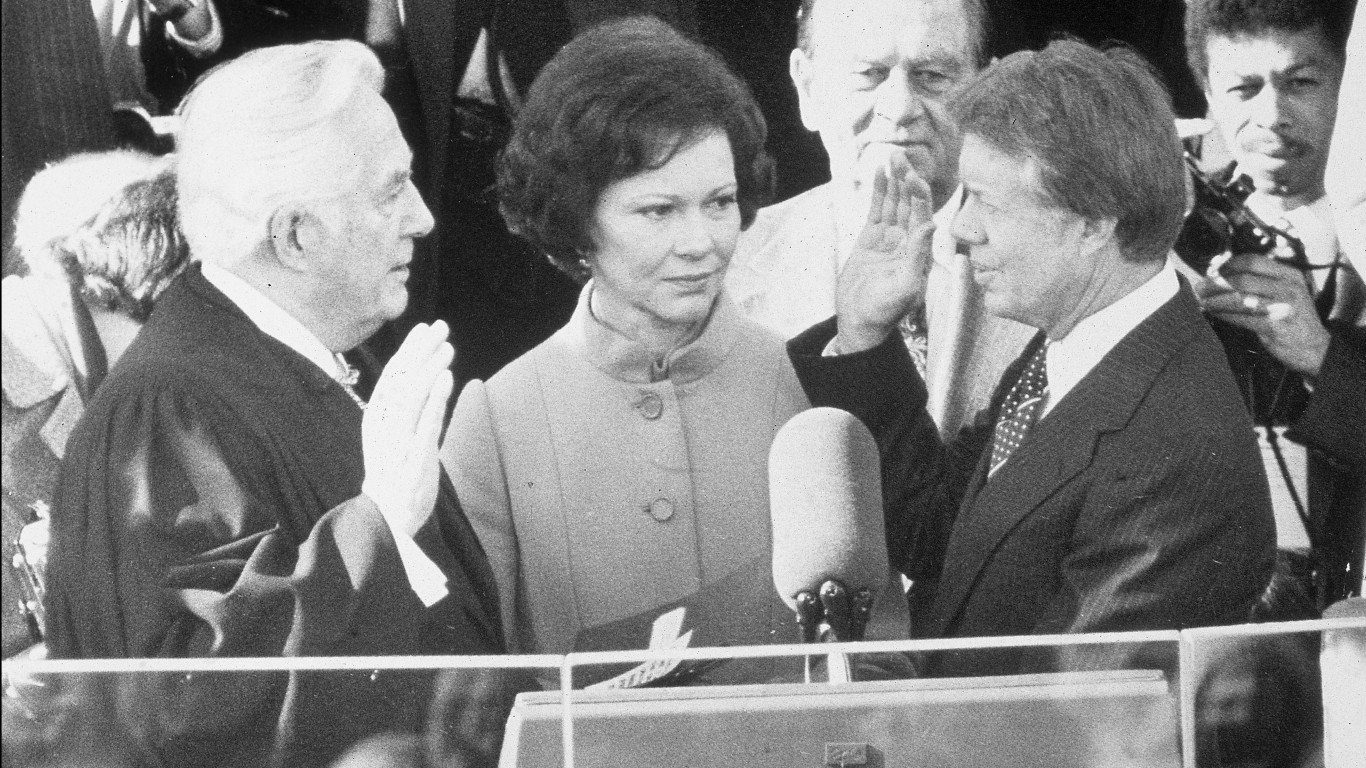
1977
> Doomsday clock position: 9 minutes to midnight
> Nuclear tests: 54
Newly elected President Jimmy Carter goes before the United Nations, outlining his policy of holding countries accountable for human rights.
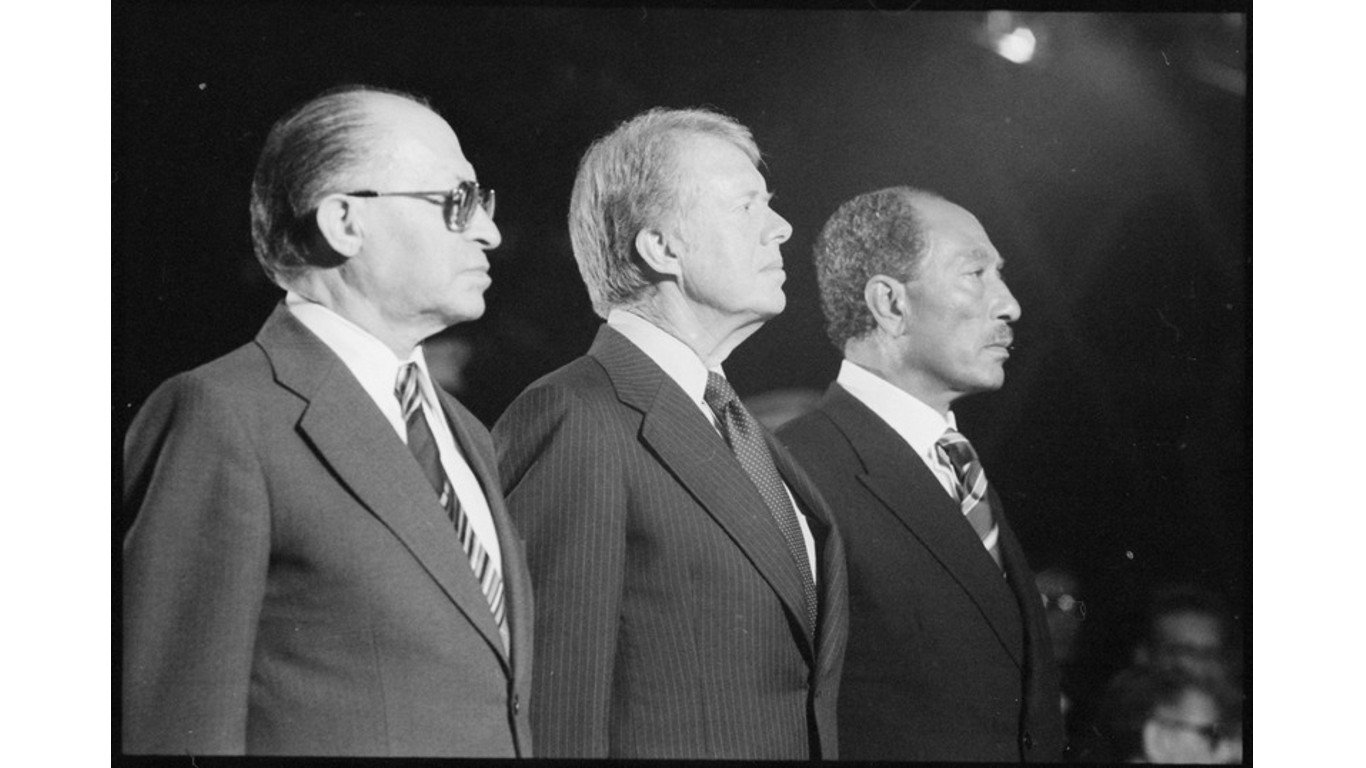
1978
> Doomsday clock position: 9 minutes to midnight
> Nuclear tests: 66
In a deal brokered by President Carter, Israel and Egypt sign a peace treaty at Camp David. The Camp David Accords are the first such agreements between an Arab state and Israel.
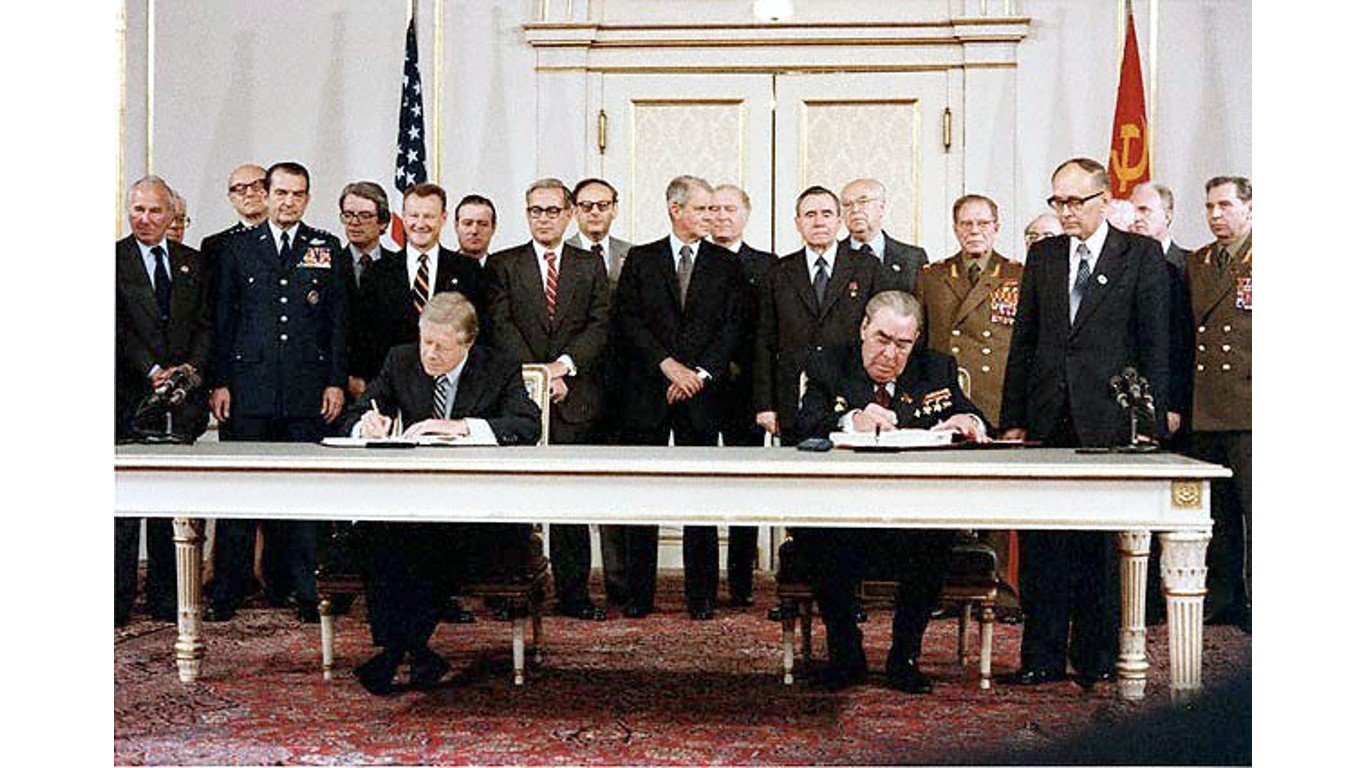
1979
> Doomsday clock position: 9 minutes to midnight
> Nuclear tests: 58
The U.S. and Soviet Union sign the SALT II agreement to reduce the number of offensive weapons systems.
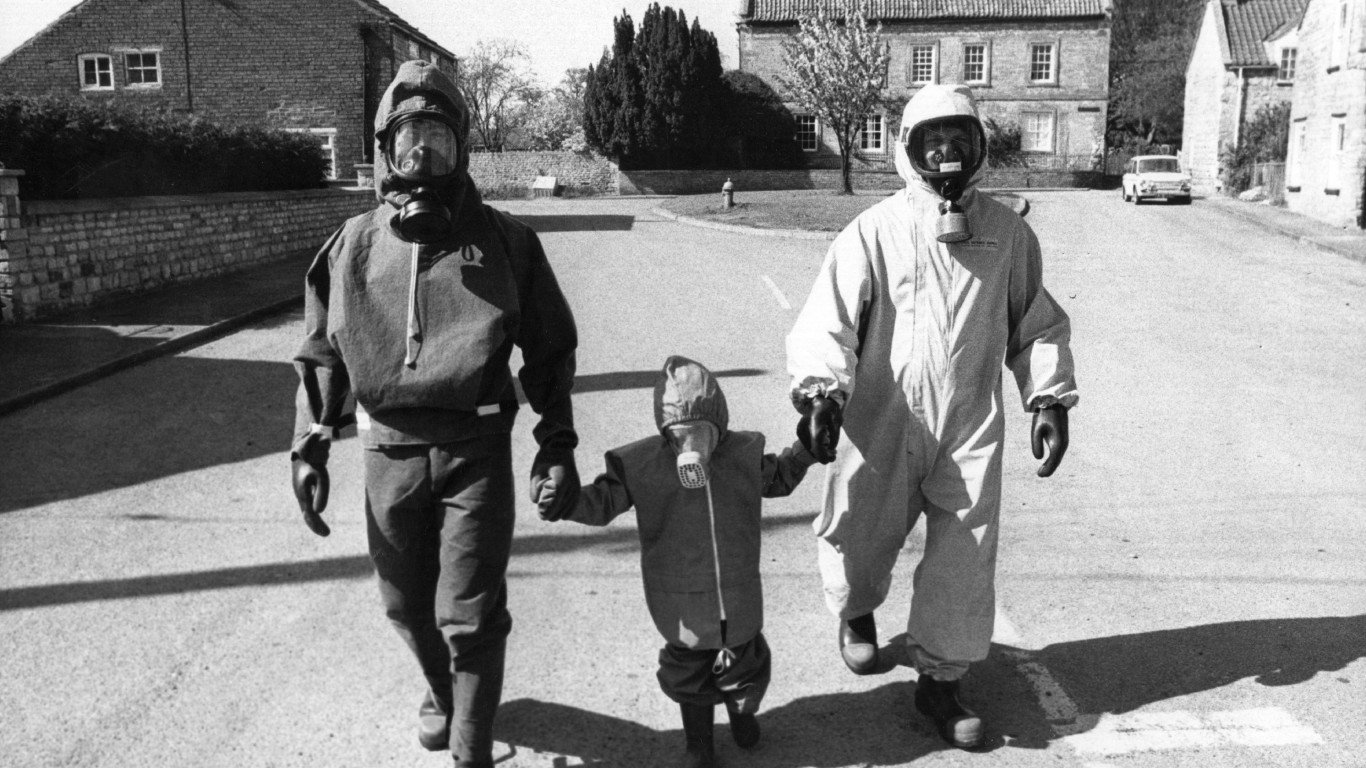
1980
> Doomsday clock position: 7 minutes to midnight
> Nuclear tests: 54
Despite some encouraging disarmament agreements, the U.S. and the USSR continue the arms race, acting, as the Bulletin describes, “as ‘nucleoholics’ — drunks who continue to insist that the drink being consumed is positively ‘the last one,’ but who can always find a good excuse for ‘just one more round’.” The Bulletin advances the clock two minutes closer to midnight. This is the beginning of the early 1980s heightened nuclear tension.
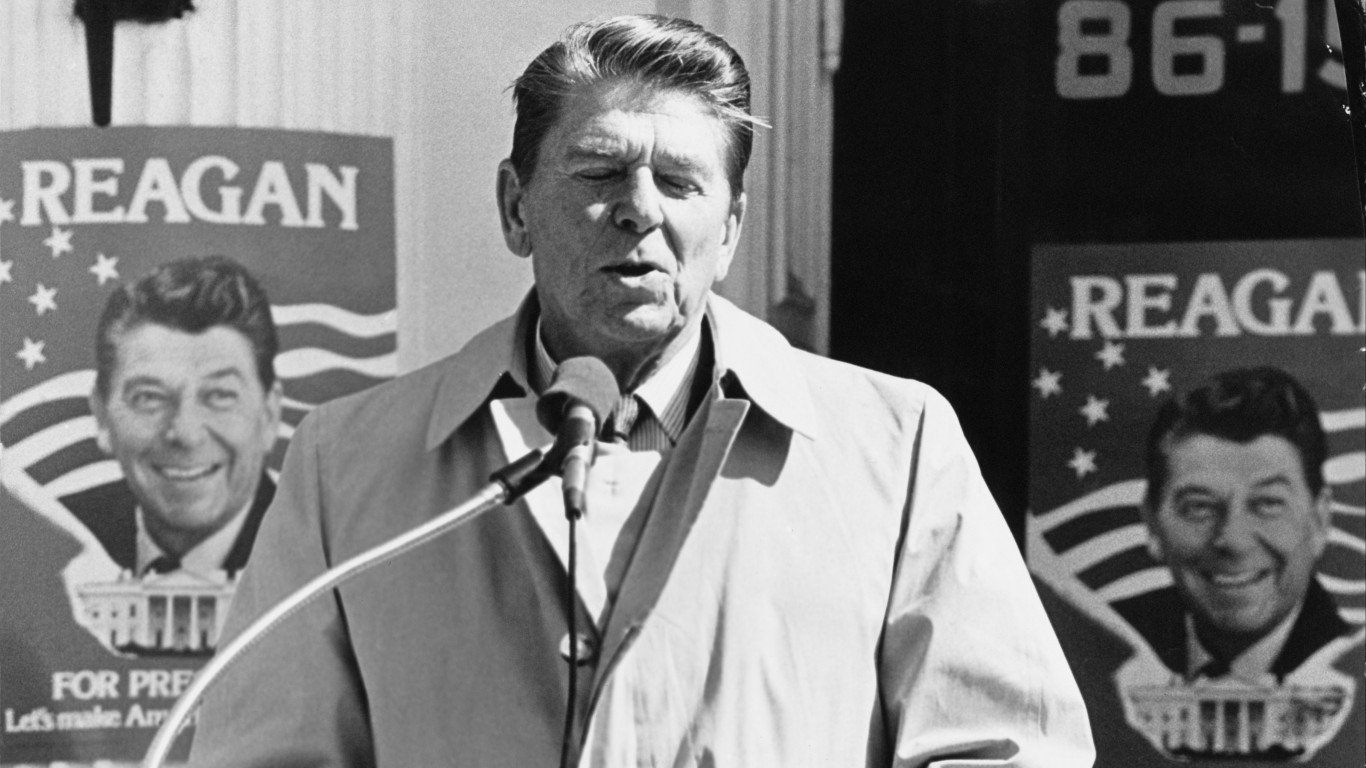
1981
> Doomsday clock position: 4 minutes to midnight
> Nuclear tests: 50
The Soviet invasion of Afghanistan hardens the U.S. nuclear posture. The rhetoric only intensifies with the election of Ronald Reagan, who scraps any talk of arms control and proposes that the best way to end the Cold War is for the United States to win it, as the Bulletin moves the clock three minutes closer to midnight.
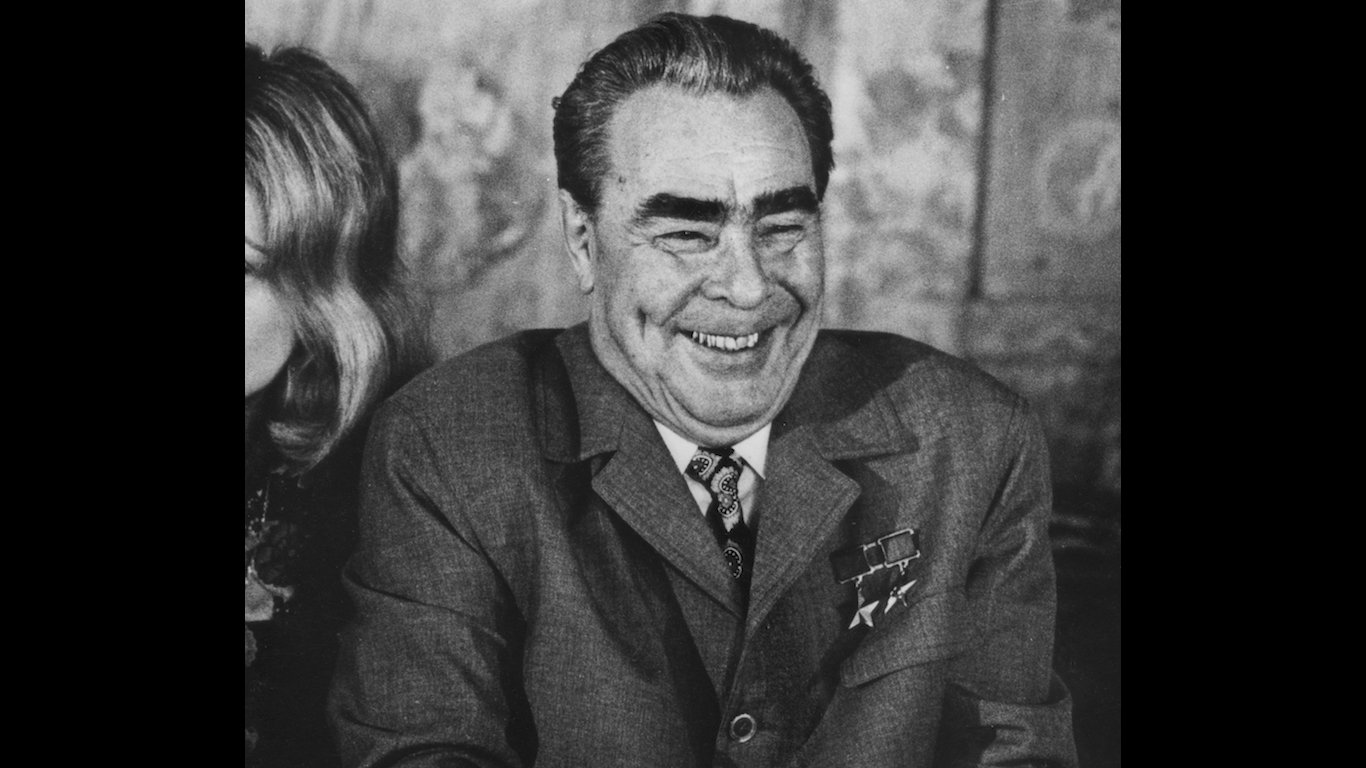
1982
> Doomsday clock position: 4 minutes to midnight
> Nuclear tests: 49
Britain and Argentina fight over the Falkland Islands, a British territory off the coast of South America. In Moscow, Soviet leader Leonid Brezhnev dies and is replaced by former KGB chief Yuri Andropov.

1983
> Doomsday clock position: 4 minutes to midnight
> Nuclear tests: 55
President Reagan proposes the “Star Wars” missile program in an effort to combat the Soviet’s nuclear power. The Strategic Defense Initiative is an anti-ballistic missile program designed to shoot down nuclear missiles in space.
1984
> Doomsday clock position: 3 minutes to midnight
> Nuclear tests: 57
U.S.-Soviet relations reach their iciest point in decades, with the U.S. flouting arms control agreements with its space-based anti-ballistic missile program. Dialogue between the two superpowers virtually stops. “Arms control negotiations have been reduced to a species of propaganda,” a concerned Bulletin informs readers as it advances the clock one minute closer to midnight.
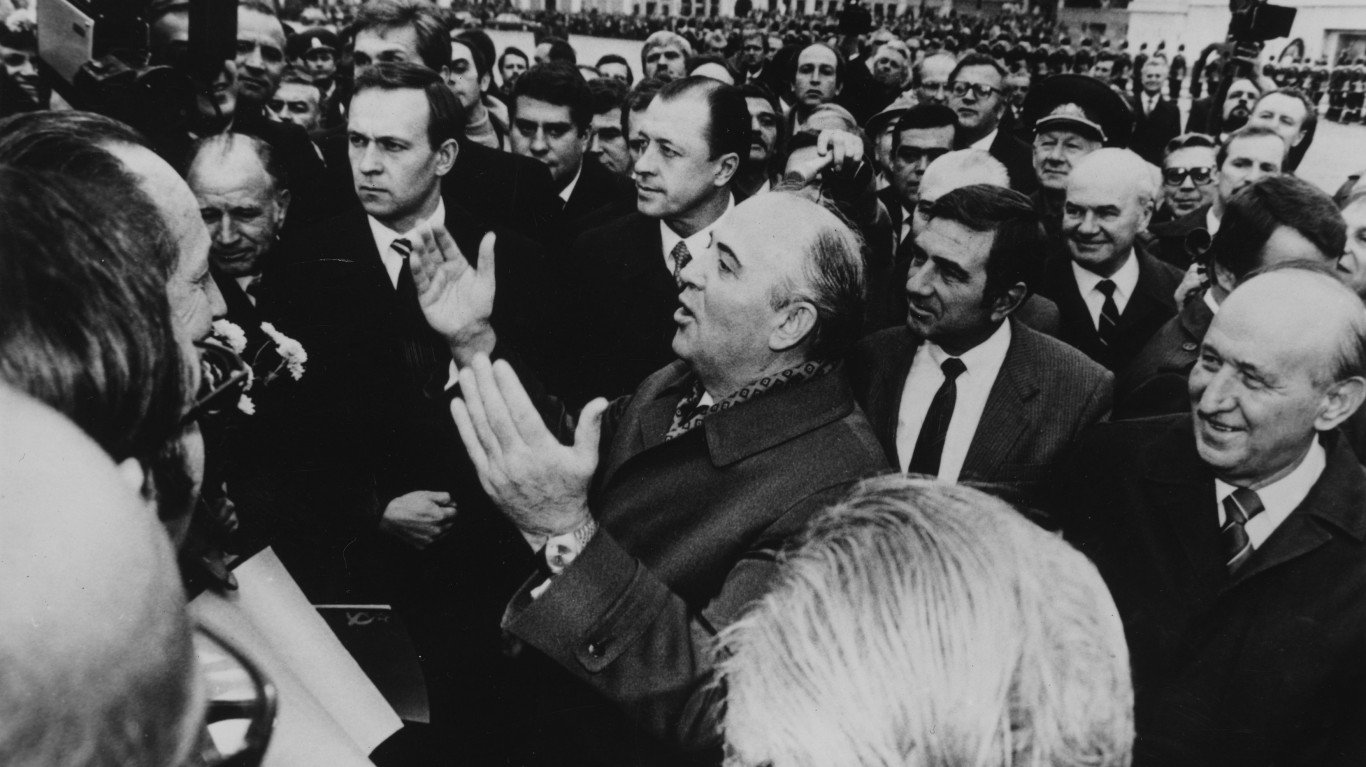
1985
> Doomsday clock position: 3 minutes to midnight
> Nuclear tests: 36
Mikhail Gorbachev becomes head of the Soviet Union. He launches a new policy of “glasnost” or openness to freedom of expression.
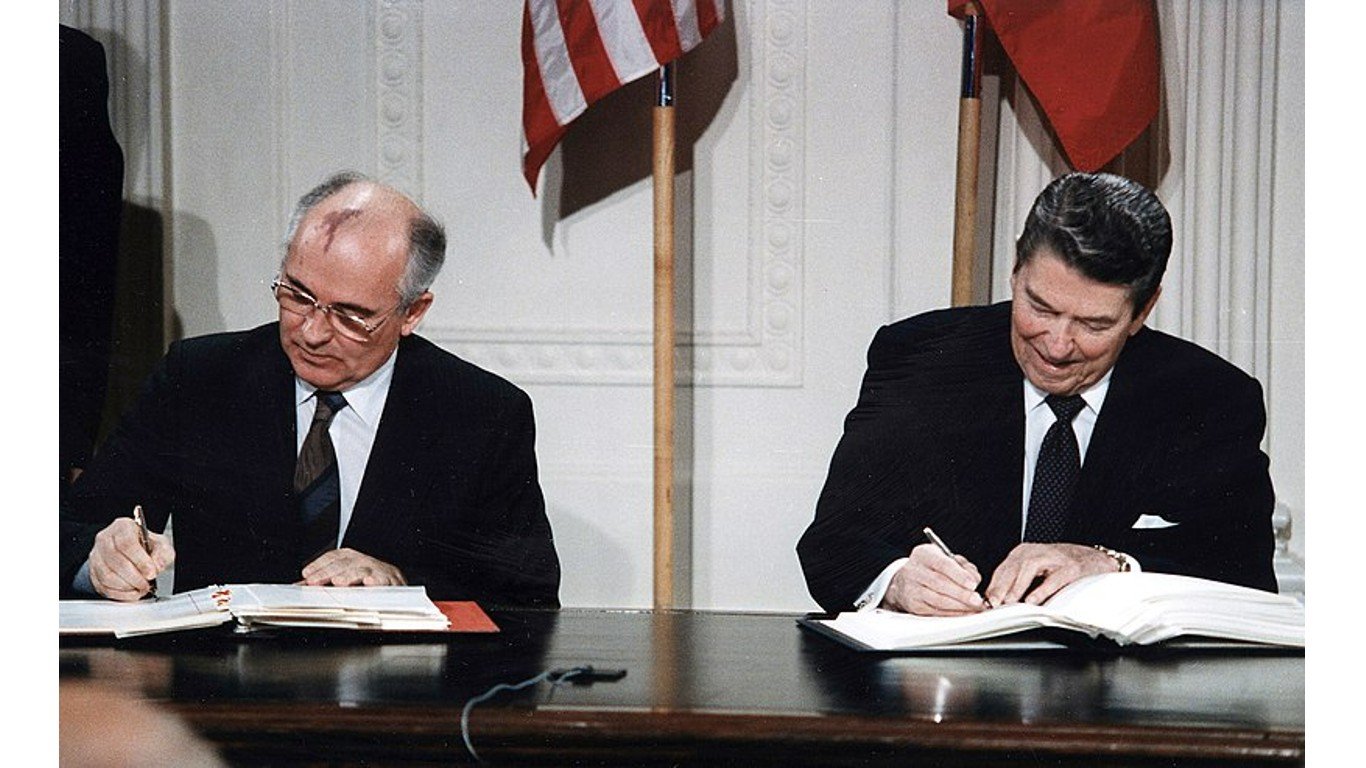
1986
> Doomsday clock position: 3 minutes to midnight
> Nuclear tests: 23
In a sign of a thawing of the Cold War, Reagan and Gorbachev agree to remove all intermediate nuclear missiles from Europe in the historic Intermediate-Range Nuclear Forces Treaty. The INF Treaty would be signed the following year.






